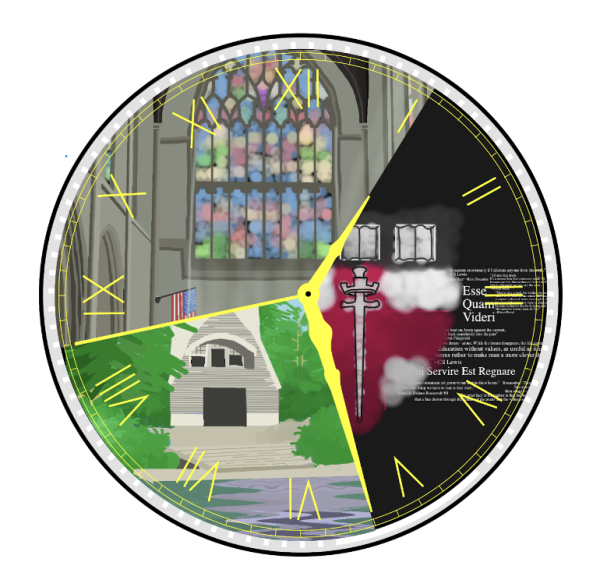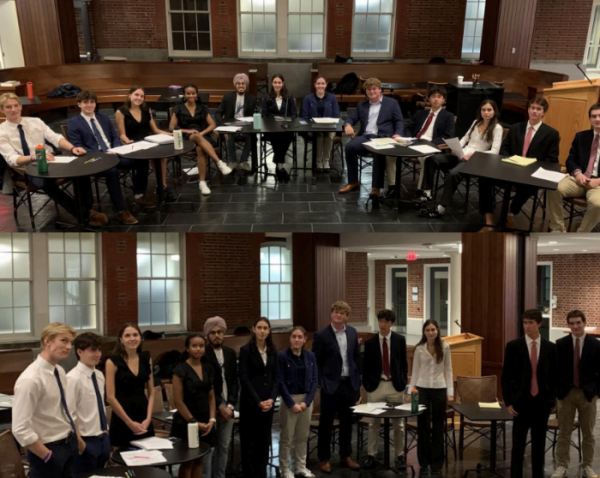New Diversity and Inclusion Initiatives

Courtesy of Davide Bonanzzi
In recent years, Groton’s trustees, faculty, and students alike have been united in their passion for diversity and inclusion. Responding to this collective drive, Groton outlined in an all-community email important facts and initiatives from various members of its community that support the school’s commitment to diversity and inclusion. The following is an overview of this email.
In the fall of 2019, Groton’s Board of Trustees began formulating a new five-year strategic plan centered around the theme of belonging. According to the email, this plan will consider “multiple facets of inclusion” including “affordability,” “curricula,” “student well-being,” and “community outreach.” Vice President of the Board of Trustees Gary Hill said, “the overarching goal of [the five-year plan] is to make sure everyone feels like they belong. Diversity is a number, while inclusion is an action. Belonging is the outcome of incorporating both diversity and inclusion.”
Starting last fall, Mr. Hill began reaching out to Black-identifying Groton alumni with the goal of hearing from all Black alumni about their experiences. Mr. Hill explained, “The Black at Groton Instagram account and the Groton Alumni Call to Action showed that the expectations set out by Groton’s mission statement were not met. My goal is to deliver on the promise of the mission statement, and that is why I am building a database of conversations with Black alumni at the grassroots level.” When asked what he has learned through his conversations, Mr. Hill replied, “Every conversation is going over an hour. Alumni are sharing something they haven’t shared since they left Groton, and that is what we are trying to do. The end goal is to be able to answer the question, ‘Does everybody feel heard?’”
The board itself has also become more inclusive. 27% of Groton trustees are people of color, more than double the percentage ten years ago. Since then, the number of women on the board has also doubled. Additionally, three major board committees — Finance, Investment, and the Committee on Trustees — are chaired by women.
Faculty have also been incorporating diversity and inclusion principles into their work. The Curricular Working Group (CWG) and the Residential Working Group (RWG) were created in the summer of 2020 to reinforce the importance of belonging in all areas of campus life. The CWG evaluates the curriculum and questions how the classroom experience can be changed in order to foster diverse and inclusive thinking. The RWG organizes discussion-oriented community gatherings and helps build conversations around what it means to be inclusive on campus.
In order to help them teach the importance of diversity and inclusion to students, faculty have participated in workshops with outside experts. Director of College Counseling and Assistant Head of School Megan Harlan enjoyed attending the workshop of author Matthew R. Kay, who addressed faculty in January. She said, “Matthew Kay talked about working aspects of diversity and inclusion into the curriculum. He reminded us that if we give students the opportunity to talk about issues they care about, they will want to respond. He really emphasized the power of the student voice.”
The College Counseling department read Race Talk and the Conspiracy of Silence by Derald Sue in the summer of 2020, which helped the department “learn how to encourage students to discover their identities by speaking up about their race, socioeconomic background, etc.,” according to Ms. Harlan. She added that the department has recently held conversations to ensure that minority groups are not overlooked: “College counseling aims to meet the needs of students requesting financial aid and encourages students of color to consider HBCUs.” Ms. Harlan finally noted that all three college counselors are white, and so she takes care to consider what this dynamic might entail for students’ college processes.
Furthermore, many teachers have begun to offer new classes that represent the experiences of minority groups. 16 out of the 30 new courses added in the past five years focus on underrepresented groups. For the second year, English teacher Hadyk-DeLodder is offering Breaking Down the Binary: Queer Literature as a Spring Term elective for interested Fifth and Sixth Form students. By studying the ways society has “created and regulated categories of ‘normal’ and ‘abnormal’ in terms of sexuality,” Mr. DeLodder wishes to “introduce voices and topics that are normally not discussed in classrooms and diversify the curriculum.” He explained that he “wanted to include LGTBQ voices” after noticing that “most texts read in English classes have ‘straight’ protagonists.”
Students have also played an instrumental role in contributing to diversity and inclusion efforts. Sixth Formers did leadership training with Jessy Molina, a “trainer and facilitator on issues of diversity, equity, and social justice,” according to her website. Community gatherings, which serve to promote conversations around topics like race, socioeconomic background, and gender, have been organized by student members of the Diversity and Inclusion Group. The most recent gathering focused on the Asian-American experience at Groton and how the school can be more respectful of Asian-American identities. Finally, a student-led initiative has successfully petitioned to add the busts of Mahatma Gandhi, Nelson Mendela, Rosa Parks, and Eleanor Roosevelt to the Schoolroom, bringing new racial and gender diversity to the collection.
All around, the community has been very responsive to calls for increased diversity and inclusion. Trustees, faculty, and students all must continue to play their part to ensure a sense of belonging for everyone on the Circle.




